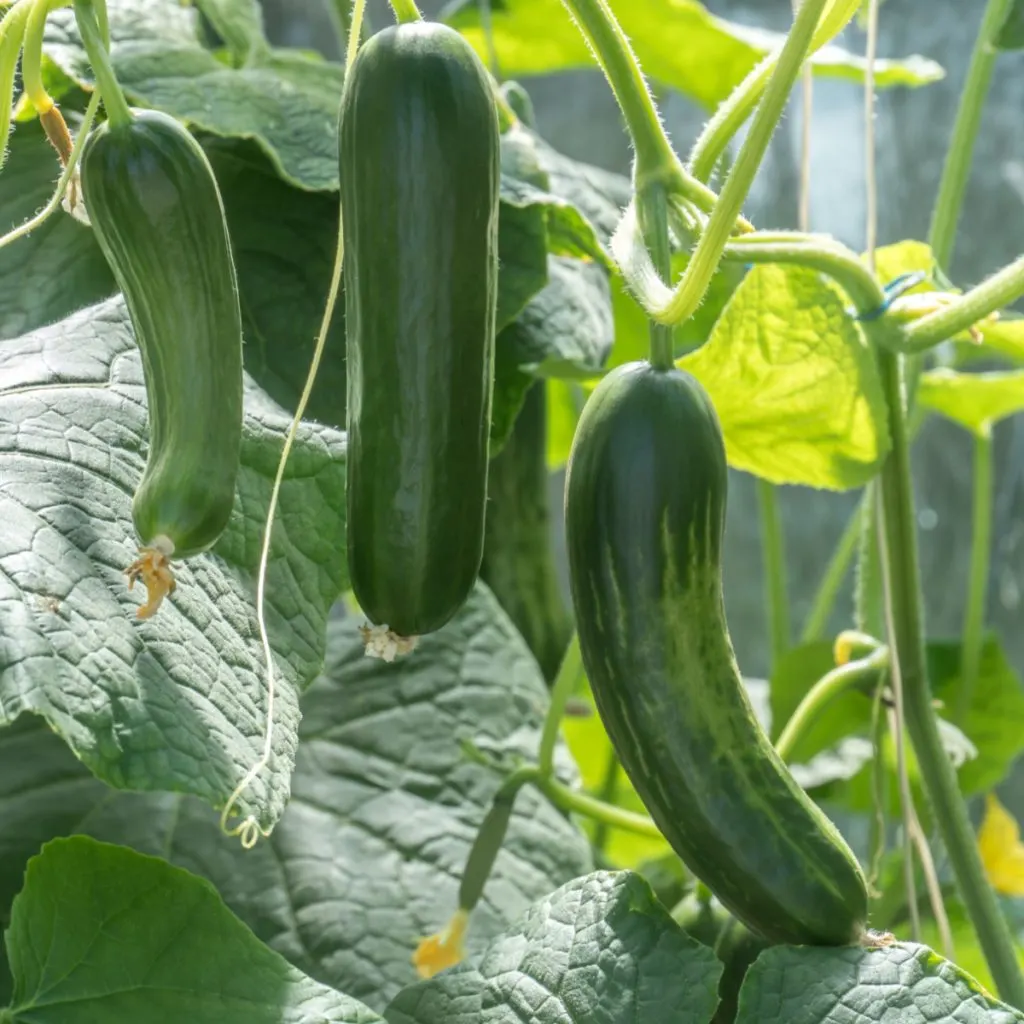If you want to grow an amazingly huge harvest of zucchini this year with the least amount of work and effort ever – then you need to plant zucchini in straw bales. It is something we’ve been doing on our farm now for years, and for us, there is just no better or easier way to grow zucchini!
For starters, as you will see below, with this simple planting method, there is no need for having to specially prepare or season your straw bales. There is also little need to grow or purchase expensive zucchini transplants – because you can simply plant seeds with amazing results. But the advantages don’t stop there!
Not only are zucchini easy to plant and maintain in bales, the elevated growing area makes harvesting a breeze. Even better, weeds and weeding chores all but disappear. But perhaps best of all, you don’t need a large garden space to grow a big crop.
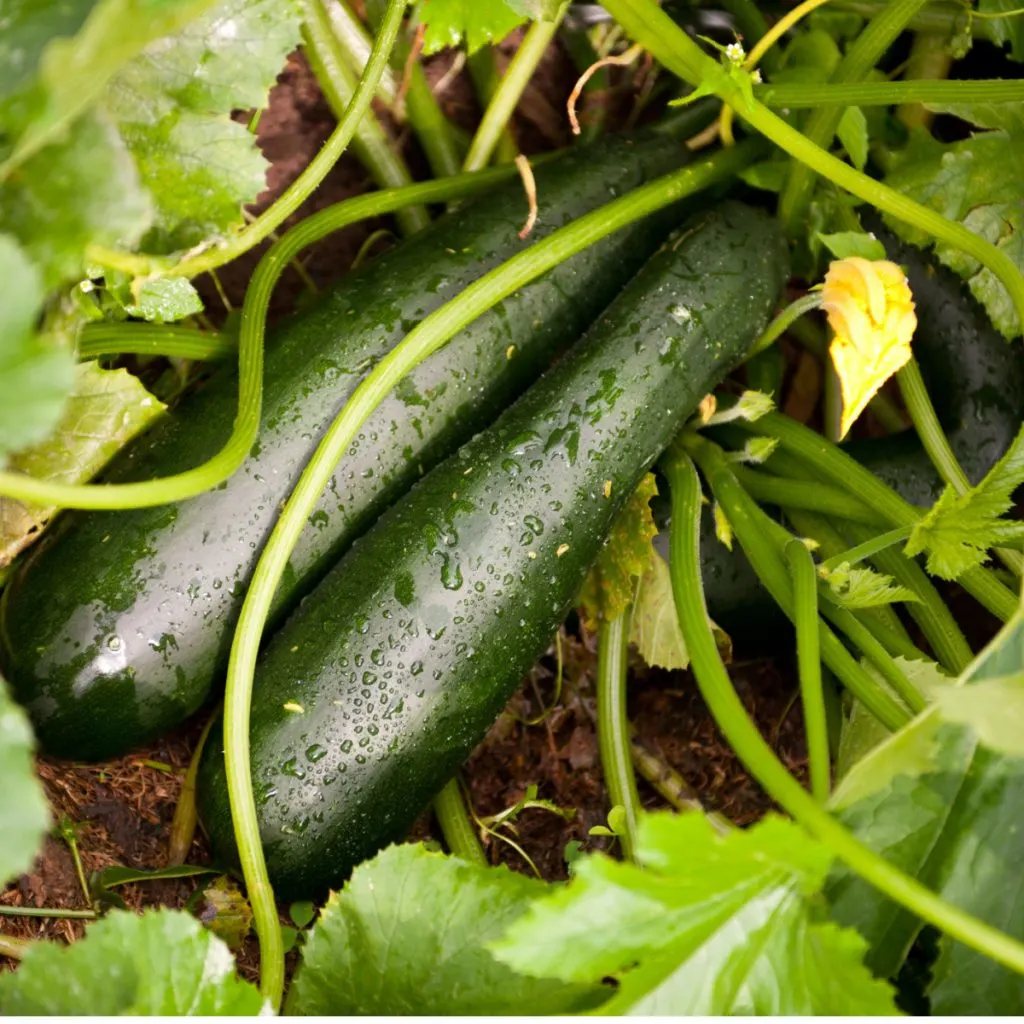
In fact, straw bale zucchini plants can grow anywhere where there is a little sunshine and space for a bale. In your garden. On a sunny patio. Or right in the middle of your backyard. As long as there is plenty of sun, you can all but ensure a harvest of fresh zucchini all summer long.
Why Zucchini Grows So Well In Straw Bales – How To Plant Zucchini In Straw Bales
It wasn’t long after growing our cucumbers in straw bales that we decided to try our hand with zucchini as well. The cucumbers worked so well, it wasn’t a big leap of faith to think that zucchini might too. And that was one hunch that paid off right away!
Straw bales have several built in advantages for growing zucchini. For starters, the bales are excellent at retaining moisture to the roots of plants. And zucchini, much like cucumbers, love their water! In addition, the straw / soil mix ( we will cover that planting process below) allows the roots of the zucchini plants to expand more easily. And the better the root system – the more nutrients and water plants can absorb.
Finally, the elevated bales provide a natural cascade for the foliage to stay above the soil level. And that is extremely important when it comes to fighting off both pests and disease. It also makes harvesting easy too.
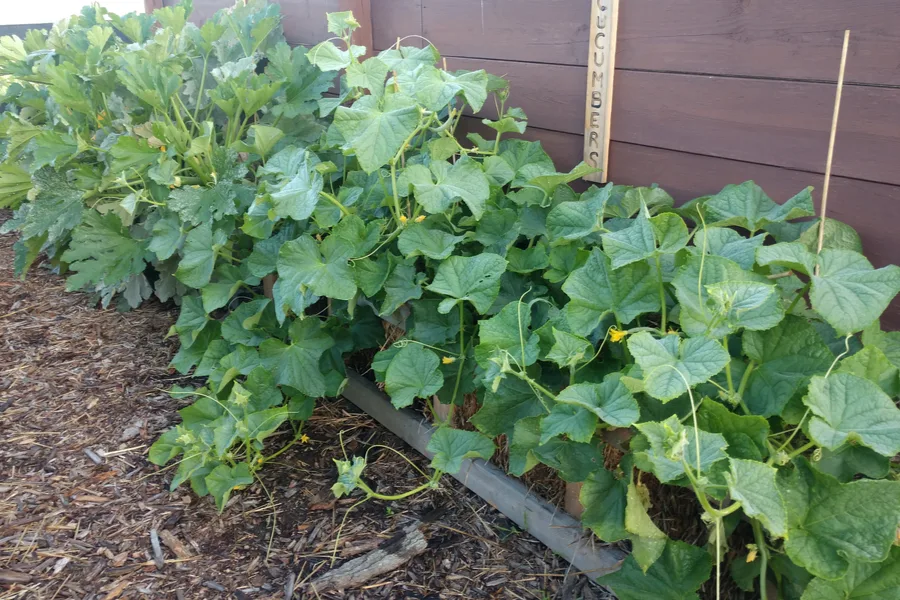
Not only did the straw bale zucchini plants produce an earlier crop than our garden planted zucchini, they also churned out a record harvest. And by being able to simply plant seeds, the process was so simple, fast and easy.
How To Plant Zucchini In Straw Bales
Success when planting zucchini in bales all begins with the planting process. First and foremost, you do not need to condition bales before planting with this method. Whether planting and growing cucumbers, zucchini, peppers or even tomatoes, we have never conditioned our bales.
Instead, we opt to make soil-filled planting holes within the bale – and do they ever help plants grow fast. Especially when you fill those planting holes with a super-charged soil mix!
Preparing The Bales For Planting – How To Plant Zucchini In Straw Bales
A standard square straw bale is about 14″ high x 18″ wide and 40″ wide. It has more than enough surface room to evenly space out 3 planting holes for three zucchini plants. Although you do not need to have a support for around your bale, we do set our bales down in a homemade “support” crate.
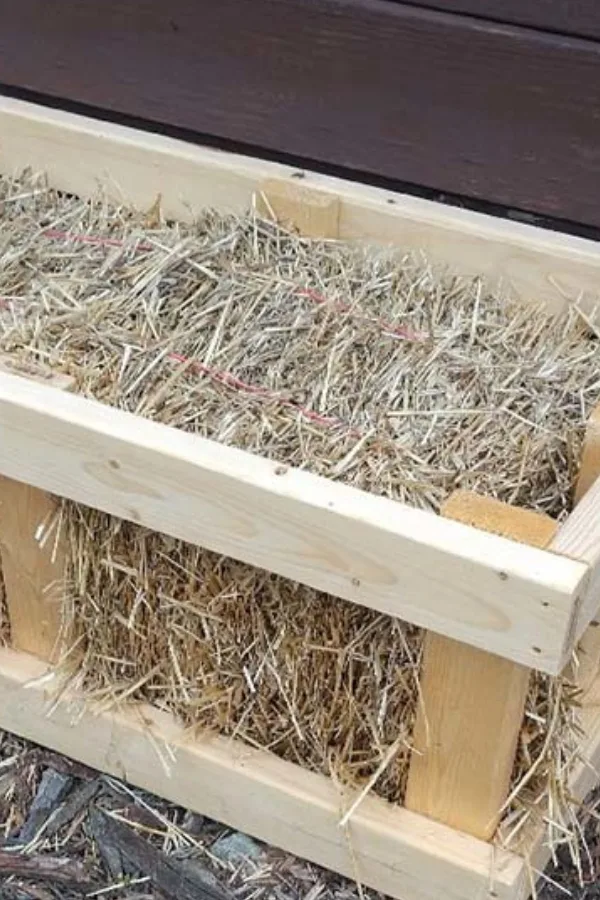
We create our crate supports from a few 2×4s. The crates help to keep the bales intact all season long. Without it, they tend to decompose and crumple down over time. As they do, the roots become loose and exposed, causing the plants to dry out way too quickly.
By wrapping the bales in these support boards, we can usually get two years of growing out of each straw bale. We use the same bale supports for our cucumbers too, and they last for years. In addition to holding the bales nicely and attractively, they are also great for attaching a trellis if you want to grow vertical.
Creating The Planting Holes – How To Plant Zucchini In Straw Bales
We use a triangle-style planting method for zucchini. To start, we carve out two holes toward each edge of the back end of each bale, and then one in the front center. This spacing is perfect for 3 plants to really fill out the bale and cascade over.
We plant our bales on the top, smoother and wider side of the bale. You can plant bales on their side as well, but we always feel the top method is better as the roots can grow down through the vertical portions of the straw.
Using a sharp knife or reciprocating saw, it’s fairly easy to quickly create 3 holes that are 8″ to 10″ deep, and about 6″ in diameter in the bales. Now it’s time to fill the holes with soil power! We fill the holes with an equal mixture of compost and potting soil. We also mix in a 1/4 to 1/3 cup of worm castings and a few tablespoons of spent coffee grounds to the mix for each hole as well.

For us, this is a must. And we really do feel it is a difference maker for growing healthy plants. The worm castings and coffee grounds give the seeds and seedlings that sprout great moisture and nutrients early on – and as they grow. Affiliate Product Link: 100% Pure Worm Castings
Mound The Planting Hole Top – How To Plant Zucchini In Straw Bales
For both zucchini and cucumbers, we actually extend the soil out of the hole to create a slight mound over each planting hole. The mound only needs to be an inch or two above, but it will help prevent the main stems from sitting in water and rotting off as they grow.
You can plant transplants, but there is simply no need to. We plant two to three seeds in each hill and thin to one plant for each hill after they sprout. Zucchini seeds sprout so fast! And by growing from seed, the roots can develop without the stress of transplanting. Honestly, it just makes more sense to go with seeds.
Once we finish planting the seeds, we put a light coat of straw (1/2 inch) over the bare planting soil to protect it. Once the seedlings sprout, we add another few inches over the soil to help keep moisture in.
Watering & Fertilizing – How To Plant Zucchini In Straw Bales
Zucchini plants need plenty of water and nutrients to grow a big harvest. The great news is that the straw bales work wonders in absorbing and holding moisture and nutrients to the roots.
Plants will need to still be watered on a regular basis, especially during the first few weeks as their roots establish in the soil / straw mix. Once established, plants need about an inch of rain or water per week for best results. For us, in season, we water about once or once every other day.
This is where a soil moisture meter can really pay off. We use them in our hanging baskets, containers and straw bale plantings. A quick probe down and we know right away if we need to water or not! Product Affiliate Link: XLUX T10 Soil Moisture Sensor Meter – Soil Water Monitor
When & How To Fertilize – How To Plant Zucchini In Straw Bales
Once plants have become established in the bales (1 to 2 weeks after seeds sprout), it’s time to start fertilizing. For straw bales, you can’t beat liquid fertilizer. It waters and feeds all at the same time. Even better, liquid fertilizers are absorbed quickly by the plants roots, stems and leaves.
We like to fertilize with compost or worm casting tea every 10 to 14 days. They give a perfect balance of low and slow energy. We can also give it at full strength with no worries of burning or overpowering plants.
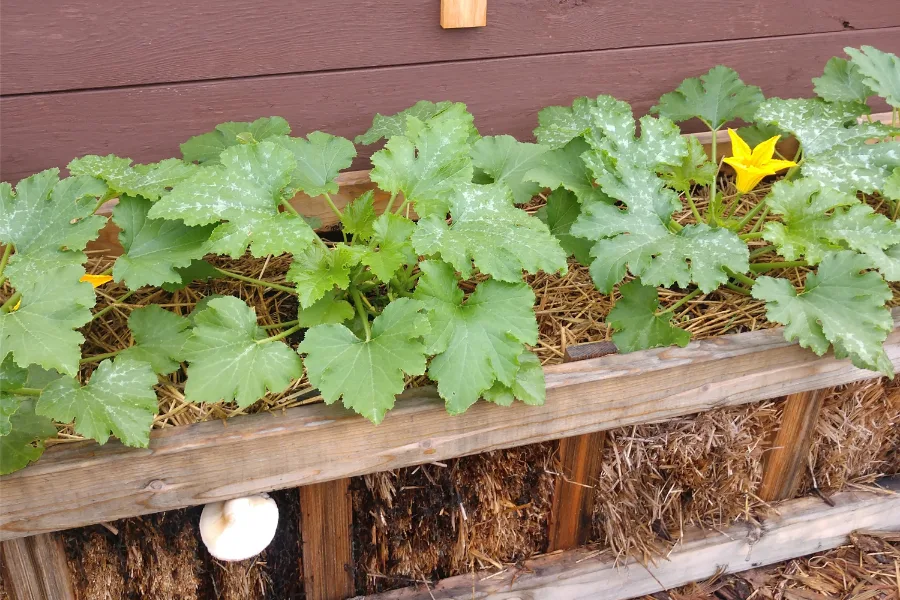
You can also use a liquid organic commercial fertilizer, but use it at half strength. This will still allow you to fertilize every 10 to 14 days without overpowering growing plants. It is better to feed more consistently with lighter doses than single big doses far apart. Affiliate Link: Miracle-Gro Performance Organics Edibles Plant Nutrition
Always fertilize early in the morning to avoid the heat of the day and issues with burning the foliage. Once the plants begins to produce, you can back off on fertilizing. Fertilizing too much at this point can create too much foliage, and not enough blooms.
Harvesting
One thing that is really important to get the best yields from your plants is to harvest early and often to keep plants producing. Smaller zucchini tend to be far tastier that oversized fruits, so picking them young is best anyway.
But in addition to better flavor, early picking encourages plants to continue producing flowers and more fruit. Unfortunately, when too much mature fruit is left on the vines, it signals the plant to cease new flower production.
Here is to planting and growing zucchini with ease this year – in straw bales! Happy Gardening, Jim and Mary.
Old World Garden
Jim and Mary Competti have been writing gardening, DIY and recipe articles and books for over 15 years from their 46 acre Ohio farm. The two are frequent speakers on all things gardening and love to travel in their spare time.
As always, feel free to email us at thefarm@owgarden.com with comments, questions, or to simply say hello! You can sign up for our free email list in the subscribe now box in the middle of this article. Follow us on Facebook here : OWG Facebook. This article may contain affiliate links.

